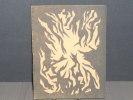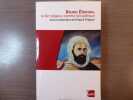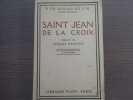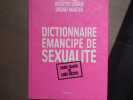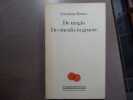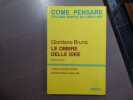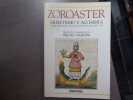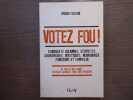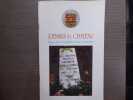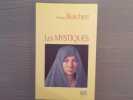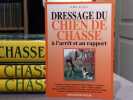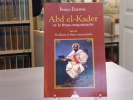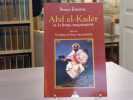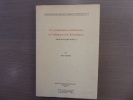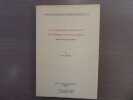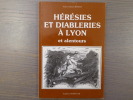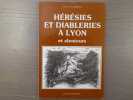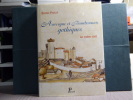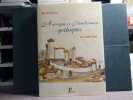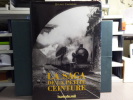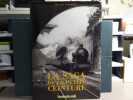6541 books for « de j m bruno p fr »Edit
-
Type
Any type (1)
Book (6376)
Drawings (1)
Magazine (6)
Music sheets (149)
New book (2)
Object book (1)
Old papers (2)
Photographs (2)
Posters (1)
-
Latest
Last 24h (2)
Last 3 days (2)
Last month (307)
Last week (1)
-
Language
Dutch (7)
English (5)
French (6483)
German (10)
Italian (11)
Russian (25)
-
Century
16th (1)
17th (1)
18th (8)
19th (60)
20th (2712)
21st (1481)
-
Countries
Belgium (320)
Brazil (1)
Canada (35)
Côte d'Ivoire (6)
Denmark (8)
France (5516)
Germany (2)
Greece (1)
Italy (54)
Netherlands (2)
Switzerland (562)
United Kingdom (9)
United States of America (25)
-
Syndicate
ALAC (31)
CLAM (23)
CLAQ (8)
CNE (1)
ILAB (2767)
NVVA (79)
SLACES (79)
SLAM (2529)
SNCAO (5)
Topics
- 1900 (20)
- Alsace (20)
- Archaeology (36)
- Architecture (102)
- Barber (23)
- Belgium (26)
- Biography (56)
- Brazil (32)
- Bruno g. (46)
- Children’s books (113)
- Christianity (36)
- Christmas (21)
- Cinema (28)
- Collections (18)
- Comic strip (115)
- Cooking (52)
- Culinary art (23)
- Dauphiné (25)
- Dedication (45)
- Detective novels (37)
- Drawings (26)
- Economics (65)
- Education (105)
- Education - morals (60)
- English (45)
- Ethic (17)
- Fashion (21)
- Fine arts (90)
- First edition (54)
- Fischer bruno (33)
- Fox (28)
- Gay lussac (66)
- Geography (42)
- Germanic languages (51)
- Gibert (32)
- Greece (20)
- Guide books (40)
- Helvética (46)
- Hermeticism (18)
- History (260)
- Humour anecdotes (23)
- Industrial arts & crafts - fine arts (28)
- Iron (23)
- Islam muslim (18)
- Italian (29)
- Italy (50)
- Journalism (36)
- Law (37)
- Linnean society of lyons (34)
- Literature (673)
- Lyons and area (34)
- Lyons college (34)
- Lyons college pc (34)
- Lyons revue (34)
- Magazine (77)
- Masure bruno (54)
- Medicine (60)
- Museums (18)
- Music (24)
- Navy (19)
- Newspapers press (115)
- Painters (20)
- Painting (44)
- Paris (33)
- Philosophy (110)
- Photography (116)
- Poetry (76)
- Policy (91)
- Professions guilds (24)
- Psychiatry neurology (28)
- Psychoanalysis (42)
- Psychology (110)
- Racine jean (17)
- Reading vocabulary (50)
- Regionalism (57)
- Religions (108)
- Review (60)
- Reviews (90)
- Sciences (42)
- Scores (166)
- Sculpture (34)
- Social sciences (20)
- Sociology (44)
- Songs (132)
- Sports (18)
- Switzerland (40)
- Symbolism (19)
- Tea (26)
- Teaching (22)
- Theatre (27)
- Theology (39)
- Travel (25)
- Various (46)
- Viticulture (18)
- War (44)
- Weil simone (26)
- Wine (21)
- Youth (38)
RYTHME 50. Numéro 1. Septembre.
Edition De Ritme Toulon 1950 In-16 carré ( 140 X 110 mm ) agrafé sous couverture illustrée, non paginé ( 8 pages ). Les poèmes de BRUNO sont sous la couverture illustrée de M. MITCHELL. Edition originale et premier tirage limité à 100 exemplaires numérotés tirés sur la presse à bras de "Ritme". Très bel exemplaire de cette intéressante et élégante réalisation enrichi de la signature autographe de BRUNO.
BRUNO ETIENNE, le fait religieux comme fait politique sous la direction de Franck Frégosi.
Editions De L Aube Aix en Provence 2009 In-4 ( 240 X 150 mm ) de 324 pages, broché sous couverture illustrée. Portrait en frontispice. Très bel exemplaire.
SAINT JEAN DE LA CROIX. Préface de Jacques MARITAIN.
Plon Paris 1929 In-8 ( 230 X 140 mm ) de 480 pages, broché sous couverture imprimée. Couvertures salies.
Dictionnaire émancipé de Sexualité. Sans tabou ni idée reçue.
Minerva Genève 2009 In-8 ( 230 X 170 mm ) de 284 pages, cartonnage imprimée. Bon exemplaire.
De Magia de Vinculis in genere.
Il Soggetto & La Scienza Italie 1986 In-8 ( 215 X 140 mm ) de 211 pages, broché sous couverture imprimée. Bon exemplaire.
Le Ombre Delle Idee.
Spirali Italy 1988 In-8 ( 210 X 140 mm ) de 147 pages, broché sous couverture imprimée. Bel exemplaire.
ZOROASTER Ermetismo E Alchimia Nelle miniature di un manoscritto del Sec. XVII.
Convivio Italie 1989 In-8 ( 250 X 170 mm ) de 123 pages, pleine toile fraise sous jaquette illustrée. Très bel exemplaire.
Votez fou! Candidats bizarres, utopistes, chimériques, mystiques, marginaux, farceurs et farfelus.
Horay Paris 2007 In-8 ( 240 X 160 mm ) de 150 pages, broché sous couverture imprimée. De 1948 à nos jours, les élus auxquels vous avez échappé. Intérieur très frais. Illustrations dans et hors-texte. Très bel exemplaire.
RENNES-LE-CHATEAU Son histoire - Ses seigneurs - Ses curés - Sa légende du trésor.
Bélisane Cazilhac 2007 In-8 ( 215 X 140 mm ) de 31 pages, broché sous couverture illustrée. Bel exemplaire.
Les MYSTIQUES.
Oxus Paris 2007 In-8 ( 240 X 150 mm ) de 314 pages, broché sous couverture illustrée. Intérieur très frais. Très bel exemplaire.
DRESSAGE DU CHIEN DE CHASSE. A l'arrêt et au rapport.
Editions De Vecchi Paris 1997 In-8 ( 205 X 145 mm ) de 191 pages, broché sous couverture illustrée en couleurs. Illustration en couleurs hors-texte et figures dans le texte. Très bel exemplaire. ( Kaps - 29 ).
Abd el-Kader et la franc-maçonnerie. - Suivi de: Soufisme et franc-maçonnerie.
Editions Dervy Paris 2008 In-8 ( 220 X 140 mm ) de 156 pages, broché sous couverture illustrée. Planches et fac-similés hors-texte. Bel exemplaire.
Les enseignements architecturaux de l'Ajitagama et du Rauravagama ( Etudes sur les ägama siväites I ).
Institut Français D'Indologie Pondichery 1977 In-8 ( 245 X 165 mm ) de 148 pages, cartonnage écru sous jaquette imprimée. 2 tableaux dépliants hors-texte. EDITION ORIGINALE. Très bel exemplaire.
Hérésies et diableries à Lyon et alentours.
Editions Horvath Lyon S.D. [1983] In-8 ( 245 X 165 mm ) de 167 pages, broché sous couverture illustrée. Illustrations dans et hors-texte. très bel exemplaire.Hérésies, des déviations de la pensée chrétienne, des superstitions, des diableries et de la sorcellerie en lyonnais
AUVERGNE et BOURBONNAIS gothique. - Le cadre civil.
Editions A. Et J. Picard - Collection "Les Monuments De La France Gothique" Paris 2003 In-8 carré ( 245 X 175 mm ) de 263 pages, pleine toile à la bradel sous jaquette illustrée en couleurs. Très nombreuses illustrations dans et hors-texte. Très bel exemplaire. Parfait "pendant" de la Collection "Zodiaque" sur l'art roman.
LA SAGA DE LA PETITE CEINTURE.
La Vie Du Rail Paris 1991 In-4 ( 305 X 215 mm ) de 287 pages, pleine toile à la bradel sous jaquette illustrée en couleurs. Superbe et abondante iconographie en couleurs et en noir dans et hors-texte. Très bel exemplaire, bien complet de la grande carte dépliante "volante".
Le monde des illusions d'optique.
Benedikt Taschen Paris 1994 In-4 ( 300 X 227 mm ) de 95 pages, broché sous couverture illustrée en couleurs. Illustrations en couleurs et en noir dans et hors-texte. Parfait état.
AVENTURES MERVEILLEUSES DE LAZARILLE DE TORMES, tirées Des vielles chroniques de Tolede.
Librairie Education Paris 1833 In-12 ( 170 X 100 mm ) de 322 pages, demi-basane fauve, dos lisse orné de fers romantiques. Gravure en frontispice. Quelques rousseurs claires, bon exemplaire.
Ueber die Lehre des Spinoza in Briefen an den Herrn Moses Mendelssohn. Neue vermehrte Auflage. - [THE FIRST EVER TRANSLATION OF BRUNO'S ""DE UNO ET CAUSA""...]
Breslau, Gottl. Löwe, 1789, 8vo. Very beautiful contemporary red full calf binding with five raised bands and gilt green leather title-label to richly gilt spine. elaborate gilt borders to boards, inside which a ""frame"" made up of gilt dots, with giltcorner-ornamentations. Edges of boards gilt and inner gilt dentelles. All edges gilt. Minor light brownspotting. Marginal staining to the last leaves. Engraved frontispiece-portrait of Spinoza, engraved title-vignette (double-portrait, of Lessing and Mendelssohn), engraved end-vignette (portrait of Jacobi). Frontispiece, title-page, LI, (1, -errata), 440 pp. Magnificent copy.
First edition thus, being the seminal second edition, the ""neue vermehrte Auflage"" (new and expanded edition), which has the hugely important 180 pp. of ""Beylage"" for the first time, which include the first translation into any language of any part of Giordano Bruno's ""de Uno et Causa..."" (pp. 261-306) as well as several other pieces of great importance to the ""Pantheismusstreit"" and to the interpretation of the philosophy of Spinoza and Leibniz, here for the first time in print. The present translation of Bruno seems to be the earliest translation of any of Bruno's works into German, and one of the earliest translations of Bruno at all - as far as we can establish, the second, only preceded by an 18th century translation into English of ""Spaccio della bestia trionfante"". It is with the present edition of Jacobi's work that the interest in Bruno is founded and with which Bruno is properly introduced to the modern world. Jacobi not only provides what is supposedly the second earliest translation of any of Bruno's works ever to appear, he also establishes the great influence that Bruno had on two of our greatest thinkers, Spinoza and Leibnitz. It is now generally accepted that Spinoza founds his ethical thought upon Bruno and that Lebnitz has taken his concept of the ""Monads"" from him. It is Jacobi who, with the second edition of his ""Letters on Spinoza..."", for the first time ever puts Bruno where he belongs and establishes his position as one of the key figures of modern philosophy and thought. Bruno's works, the first editions of which are all of the utmost scarcity, were not reprinted in their time, and new editions of them did not begin appearing until the 19th century. For three centuries his works had been hidden away in libraries, where only few people had access to them. Thus, as important as his teachings were, thinkers of the ages to come were largely reliant on more or less reliable renderings and reproductions of his thoughts. As Jacobi states in the preface to the second edition of his ""Letters on Spinoza..."", ""There appears in this new edition, under the title of Appendices (""Beylage""), different essays, of which I will here first give an account. The first Appendix is an excerpt from the extremely rare book ""De la causa, principio, et Uno"", by Jordan Bruno. This strange man was born, one knows not in which year, in Nola, in the Kingdom of Naples"" and died on February 17th 1600 in Rome on the stake. With great diligence Brucker has been gathering information on him, but in spite of that has only been able to deliver fragments [not in translation]. For a long time his works were, partly neglected due to their obscurity, partly not respected due to the prejudice against the new opinions and thoughts expressed in them, and partly loathed and suppressed due to the dangerous teachings they could contain. On these grounds, the current scarcity of his works is easily understood. Brucker could only get to see the work ""De Minimo"", La Croce only had the book ""De Immenso et Innumerabilibus"" in front of him, or at least he only provides excerpts from this [also not in translation], as Heumann does only from the ""Physical Theorems"" [also small fragments, not in translation]"" also Bayle had, of Bruno's metaphysical works, himself also merely read this work, of which I here provide an excerpt."" (Vorrede, pp. (VII)-VIII - own translation from the German). Jacobi continues by stating that although everyone complains about the obscurity of Bruno's teachings and thoughts, some of the greatest thinkers, such as Gassendi, Descartes, ""and our own Leibnitz"" (p. IX) have taken important parts of their theorems and teachings from him. ""I will not discuss this further, and will merely state as to the great obscurity (""grossen Dunkelheit"") of which people accuse Bruno, that I have found this in neither his book ""de la Causa"" nor in ""De l'Infinito Universo et Mondi"", of which I will speak implicitly on another occasion. As to the first book, my readers will be able to judge for themselves from the sample (""Probe"") that I here present. My excerpt can have become a bit more comprehensible due to the fact that I have only presented the System of Bruno himself, the ""Philosophia Nolana"" which he himself calls it, in its continuity... My main purpose with this excerpt is, by uniting Bruno with Spinoza, at the same time to show and explain the ""Summa of Philosophy"" (""Summa der Philosophie"") of ""En kai Pan"" [in Greek characters - meaning ""One and All""]. ... It is very difficult to outline ""Pantheism"" in its broader sense more purely and more beautifully than Bruno has done."" (Vorrede pp. IX-XI - own translation from the German). So not only does Jacobi here provide this groundbreaking piece of Bruno's philosophy in the first translation ever, and not only does he provide one of the most important interpretations of Spinoza's philosophy and establishes the importance of Bruno to much of modern thought, he also presents Bruno as the primary exponent of ""pantheism"", thereby using Bruno to change the trajectory of modern thought and influencing all philosophy of the decades to come. After the second edition of Jacobi's ""Ueber die Lehre des Spinoza"", no self-respecting thinker could neglect the teachings of Bruno"" he could no longer be written off as having ""obscure"" and insignificant teachings, and one could no longer read Spinoza nor Leibnitz without thinking of Bruno. It is with this edition that the world rediscovers Bruno, never to forget him again.WITH THE FIRST EDITION OF ""UEBER DIE LEHRE DES SPINOZA"" (1785), JACOBI BEGINS THE FAMOUS ""PATHEISMUSSTREIT"", which focused attention on the apparent conflict between human freedom and any systematic, philosophical interpretation of reality. In 1780, Jacobi (1743-1819), famous for coining the term nihilism, advocating ""belief"" and ""revelation"" instead of speculative reason, thereby anticipating much of present-day literature, and for his critique of the Sturm-und-Drang-era, had a conversation with Lessing, in which Lessing stated that the only true philosophy was Spinozism. This led Jacobi to a protracted and serious study of Spinoza's works. After Lessing's death, in 1783 Jacobi began a lengthy letter-correspondende with Mendelssohn, a close friend of Lessing, on the philosophy of Spinoza. These letters, with commentaries by Jacobi, are what constitute the first edition of ""Ueber die lehre des Spinoza"", as well as the first part of the second edition. The second edition is of much greater importance, however, due to greatly influential Appendices. The work caused great furor and the enmity of the Enlightenment thinkers. Jacobi was ridiculed by his contemporaries for attempting to reintroduce into philosophy belief instead of reason, was seen as an enemy of reason and Enlightenment, as a pietist, and as a Jesuit. But the publication of the work not only caused great furor in wider philosophical circles, there was also a personal side to the scandal which has made it one of the most debated books of the period: ""Mendelssohn enjoyed, as noted at the outset, a lifelong friendship with G. E. Lessing... Along with Mendelssohn, Lessing embraced the idea of a purely rational religion and would endorse Mendelssohn's declaration: ""My religion recognizes no obligation to resolve doubt other than through rational means"" and it commands no mere faith in eternal truths"" (Gesammelte Schriften, Volume 3/2, p. 205). To pietists of the day, such declarations were scandalous subterfuges of an Enlightenment project of assimilating religion to natural reason... While Mendelssohn skillfully avoided that confrontation, he found himself reluctantly unable to remain silent when, after Lessing's death, F. H. Jacobi contended that Lessing embraced Spinoza's pantheism and thus exemplified the Enlightenment's supposedly inevitable descent into irreligion.Following private correspondence with Jacobi on the issue and an extended period when Jacobi (in personal straits at the time) did not respond to his objections, Mendelssohn attempted to set the record straight about Lessing's Spinozism in ""Morning Hours"". Learning of Mendelssohn's plans incensed Jacobi who expected to be consulted first and who accordingly responded by publishing, without Mendelssohn's consent, their correspondence - ""On the Teaching of Spinoza in Letters to Mr. Moses Mendelssohn"" - a month before the publication of ""Morning Hours"". Distressed on personal as well as intellectual levels by the controversy over his departed friend's pantheism, Mendelssohn countered with a hastily composed piece, ""To the Friends of Lessing: an Appendix to Mr. Jacobi's Correspondence on the Teaching of Spinoza"". According to legend, so anxious was Mendelssohn to get the manuscript to the publisher that, forgetting his overcoat on a bitterly cold New Year's eve, he delivered the manuscript on foot to the publisher. That night he came down with a cold from which he died four days later, prompting his friends to charge Jacobi with responsibility for Mendelssohn's death.The sensationalist character of the controversy should not obscure the substance and importance of Mendelssohn's debate with Jacobi. Jacobi had contended that Spinozism is the only consistent position for a metaphysics based upon reason alone and that the only solution to this metaphysics so detrimental to religion and morality is a leap of faith, that salto mortale that poor Lessing famously refused to make. Mendelssohn counters Jacobi's first contention by attempting to demonstrate the metaphysical inconsistency of Spinozism. He takes aim at Jacobi's second contention by demonstrating how the ""purified Spinozism"" or ""refined pantheism"" embraced by Lessing is, in the end, only nominally different from theism and thus a threat neither to religion nor to morality."" (SEP).The Beylagen, which are not included in the 1785 first edition and only appear with the 1789 second edition, include: I. Auszug aus Jordan Bruno von Nola. Von der Ursache, dem Princip und dem Einen (p. 261-306) II. Diokles an Diotime über den Atheismus (p. 307-327) translation of Lettre ... sur l'Athéisme by F. Hemsterhuis.
Opera ea quae ad adinventam ab ipso ertem universalem, Scientiarum Artiumque omnium breui compendio, firmaque memoria apprehendendarum, locupletissimaque vel oratione ex tempore pertractandarum, pertinent. Ut et In eandem quorumdam interpretum scripti... - [SPARKING LEIBNIZ' DREAM OF A UNIVERSAL ALGEBRA]
Argentinae (i.e Strassburg], Lazarus Zetzner, 1598. 8vo. Very nice 19th century half calf with richly gilt spine. Some browning and spotting, but overall a nice copy. Many woodcut diagrams in the text. Woodcut printer's device to title-page. (24), 992, (32) pp.
Scarce first edition of this seminal publication, which is practically solely responsible for the spreading of both Lullism and Bruno's mnemonic theories in the 17th century. This publication constitutes the standard work on Lull for more than a century and it directly influenced the most significant thinkers of the following century, e.g. Leibnitz, whose dream of a universal algebra was stimulated by the reading of Lull (and Bruno) in the present publication.""In 1598, while the philosopher from Nola (i.e. Bruno) was in prison in Rome, Johann Heinrich Alsted together with the printer Lazarus Zetzner in Strasburg, published a great collection of the works by Raymond Lull and the most significant commentaries on Lullism, among them also some treatises by Bruno. Since then, Bruno's mnemonics was a basic component of all attempts made in the seventeenth century to set up a universal science on the basis of a theory of combinations interpreted in terms of Neo-Platonism... It was also Leibniz who was one of the first to assume similarities between Bruno's theory of the infinite and the Cartesian theory of vortices in an undetermined and infinite universe"" Leibniz had had the opportunity to read these treatises in his capacity as librarian of the Herzog August Library in Wolfenbüttel"". (Blum, p. 110). ""From another of Pierce's Lists we know that he possessed an important collection of Lullian and Lullist texts, namely the Renaissance edition by the famous Strasbourg editor Lazarus Zetzner: ""Raymundi Lulli Opera ea quae ad adinventam ab ipso Artem universalem... pertinent"" (printed first in 1598, then 1609, 1617 and, by his heirs, in 1651). This edition, which was very influential - the young Leibniz, for instance, acquainted himself with Llull through this anthology-, contains several works by Llull himself as well as those Renaissance commentaries on his works by Agrippa of Netteshein, Giordano Bruno..."" (Fidora, p. 181).This highly influential publication of Lull's ""Opera"" through which Leibniz and many of his contemporaries got acquainted with Lull and Bruno, contains seven genuine works by Lull (including the two most important works of the last period of the Art, the ""Ars brevis"" and the ""Ars magna""), four works falsely attributed to Lull, Agrippa's ""In Artem Brevem"" - and Bruno's four highly important commentaries on Lull, being the ""De Lulliano specierum scrutinio"" (pp. 685-97), ""De Lampade combinatoria Lulliana"" (pp. 698-755), ""De Progressu Logicae venationis"" (pp. 756-62) and ""De Lampade venatoria logicurum"" (pp. 763-806), which constitute Bruno's most important logical treatises and his seminal writings on mnemonics. The four treatises originally appeared separately in 1587 and 1588 respectively, and all appear here for the second time (apart from the ""De progressu"", which also appeared together with the first printing of the ""De Lampade venatoria logicorum"" the following year and here thus appears for the third time). The first printings of these works are of impossible scarcity and hardly obtainable. These four groundbreaking works appear together for the first time in the present publication and it is through this second printing of them that 17th century thinkers such as Leibniz got acquainted with them. Raymond Lull (ca. 1232-1315) was one of the most important and influential philosophers and logicians of his time. He is considered a pioneer of several fields of science, now most notably computation theory. His works sparked Leibniz' interest in the field and drove him to his seminal invention. Lull invented an ""art of finding truth"" (often in Lullism referred to as ""The Art""), which centuries later, when read in the present publication, stimulated Leibnitz' dream of a universal algebra. Lull applied this art to basically all subjects studied at the Medieval Universities. ""Lull's metaphysics worked a revolution in the history of philosophy"" (The Cambridge History of Renaissance Philosophy, p. 548). Giordano Bruno (1548-1600) is one of the most significant thinkers of modern times. He prepared the way for the rise of modern philosophy and became a forerunner of modern philosophy and science. His logical commentaries and mnemonic treatises were of special importance to the emerging logic of the 17th century and it is his version of Lullism that comes to dominate this significant strand of thought for more than a century. Having been arrested in 1592 due to alleged heresy, Bruno was subjected to a 6 year long trial that finally condemned him to hanging in 1600, two years after the publication of the four works that came to secure his influence over the following century. ""Bruno burned for philosophy"" he was killed for moral, physical, and metaphysical views that terrified and angered authorities."" (Copenhaver & Schmitt, p. 315).""By far the greatest figure of this generation was Giordano Bruno (1548-1600), whose interest in Llull dates almost exclusively from his sojurns in France and Germany. His activities in this field, which he combined with his other aspects of Reniassance philosophy, are too complex to be treated in any detail here. Suffice it to say with Frances Yates that ""the three strands of the Hermetism, the mnemonics, the Lullism are all interwoven in Bruno's complex personality, mind and mission""...""Perhaps the most important event of Lulliasm of this period was not the appearance of any new figure or work but the publication of an anthology by Lazarus Zetzner of Strasburg, entitled ""Raymundi Lullii, opera ea quae ad adinventam ab ipso Artem universalem"", which, for the next century or so, was to become the standard work on Llull. It is therefore instructive in understanding seventeenth-century Lullism... The first edition of this anthology appeared in Strasburg in 1598. It was reprinted in 1609... reprinted in 1617 and again in 1651... This mixture of Llull, pseudo-Llull, and Renaissance commentaries, emphasizing a general art of discourse, constituted the ""package"" in which Llull was presented to seventeenth-century readers, including Leibniz (note 33: it was apparently the first edition of 1598 that Leibniz read), and it must be kept in mind when discussing their version of Llull."" (Bonner, pp. 67-68). Bruno's works, the first editions of which are all of the utmost scarcity, were generally not reprinted in Bruno's lifetime and new editions of them did not begin appearing until the 19th century. For three centuries his works had been hidden away in libraries, where only few people had access to them. One very significant exception is the four treatises that we find in the present publication. They are among the only of Bruno's treatises to be published again before the 19th century, and as they don't appear again on their own, but here, in THE most important publication of Lull's writings for more than a century, it is through this second printing of these four works that Bruno comes to have his primary influence upon 17th century philosophy and science. His separate publications were simply not accessible to thinkers like Leibniz and could thus not be studied. Also therefore, Zetzners' 1598 publication of Lull and Bruno together proved to be of seminal importance, not only to the spreading of Lullism, but just as much to the spreading of Bruno's even more important theories. ""Raymond Lull (ab. 1232 - 1315), Majorcan writer, philosopher, memorycian (he was later to become a great source of inspiration for Giordano Bruno), logician, and a Franciscan tertiary. He wrote the first major work of Catalan literature. Recently-surfaced manuscripts show him to have anticipated by several centuries prominent work on elections theory. He is sometimes considered a pioneer of computation theory, especially given his influence on Gottfried Leibniz. He is also well known also as a glossator of Roman Law. Lull taught himself Arabic with the help from a slave. As a result, he wrote his ""Ars Magna"", which was intended to show the necessary reasons for the Christian faith. To promote his theory and test its effectiveness, he went to Algiers and Tunis. At the age of 82, in 1314, Lull traveled again to North Africa, where an angry crowd of Muslims stoned him in the city of Bougie. Genoese merchants took him back to Mallorca, where he died at home in Palma the following year."". (Thorndyke)Giordano Bruno was born in Nola in Southern Italy in 1548, and entered the Dominican order in Naples at the age of 18. While pursuing theological studies, he also thoroughly studied the ancient philosophers and began doubting some of the teachings of the Catholic Church. When he was in Rome in 1576, these doubts became known to the authorities of his order, and an indictment for heresy was prepared against him. Before he could be arrested, he escaped and began a long journey which took him to many European countries, among these England, where his most important works are published, until in 1592 he was denounced to the Inquisition and arrested. In 1593 he was taken to Rome, imprisoned, and subjected to a 6 year long trial. He firmly refused to recant his philosophical opinions, and in 1600 he was condemned for heresy, sentenced to death, and burned alive.SALVESTRINI NR. 1.See:Anthony Bonner: Doctor Illuminatus. A Ramon Llull Reader, 1993.Paul Richard Blum: Giordano Bruno. An Introduction, 2012.The Cambridge History of Renaissance Philosophy.Alexander Fidora: Peirce's Account of the Categories and Ramon Llull.
Souvenirs et anecdotes de M/O de Bruno..
S.l., s.d. 7 parties in-folio, [29] ff. n. ch., en feuilles.
Intéressant ensemble de notes transcrivant des souvenirs épars du général Adrien-François de Bruno (1771-1861), qui s'illustra pendant les guerres napoléoniennes, et en particulier au service du roi Louis Bonaparte en Hollande (1806-1810).On n'a pas affaire ici à une narration continue, mais à une suite d'épisodes sans lien, correspondant à diverses périodes de la vie de Bruno, et regroupés sous quelques têtes de chapitres (que nous transcrivons plus bas). En bref, des matériaux pour un projet de rédaction sans doute plus important, mais qui n'a pas vu le jour. L'écriture est régulière, moyennement lisible, comportant de nombreuses ratures et biffures. L'examen de détail ne peut faire exclure des enjolivements rétrospectifs et des confusions de date (e.g. il est malaisé de rattacher exactement la mission de Saint-Just et Lebas du III avec un commandement précis de Kléber ; l'anecdote du IV ne peut se placer en cohérence avec ce qui est raconté de l'engagement de Bruno en II, etc.). Probablement, le général était fort âgé quand il dicta ces notes, car il est certain qu'il ne les rédigea pas lui-même, comme le fait savoir l'introduction du VII : "Peu studieux dans son enfance, aimant désordonnément le plaisir , le mouvement et les émotions d'une vie aussi agitée qu'active, M/O n'avait jamais eu le goût de la plume et sa répugnance pour l'écriture avait fini par devenir telle que souvent il négligeait les affaires les plus importantes, faute de pouvoir se décider à mettre de l'encre sur une feuille de papier". Dans ce contexte, la mention M/O que l'on rencontre aux titres de plusieurs de ces souvenirs ainsi qu'au titre général semble signifier "mon oncle", ce qui signifierait que le secrétaire était un des enfants ou petits-enfants de sa soeur Marie-Blanche de Milanges (cf. infra). C'est lui qui suggéra à Bruno de rédiger des mémoires, selon la vogue qui poussait les acteurs de la période napoléonienne à coucher par écrit leurs exploits.On a donc, par ordre chronologique :I. Famille et naissance de M/O : [2] ff. n. ch. "Ma famille est originaire d'Allemagne. J'ignore par quel concours de circonstances, il se fit que l'un de mes ayeux alla s'établir à Naples. Il y mit au monde trois fils qui se dispersèrent de divers côtés. L'un se fixa en France, l'autre en Savoie, le troisième passa aux Indes orientales et s'établit à Chandernagor dans les possessions françaises". C'est ce dernier fils, Antoine de Bruno (1708-1757), qui est le grand-père du narrateur ; il serait mort décapité au cours d'une guerre interne à la Birmanie. Son fils unique, Louis de Bruno (1739-1814) eut à son tour trois enfants de son mariage avec Marie-Josèphe Law de Clapernon, parente de Law de Lauriston, dont le dernier est notre narrateur, Adrien-François de Bruno (né le 10 juin 1771 à Pondichéry). Quand ce dernier approcha ses cinq ans, ses parents décidèrent en 1776 de revenir se fixer en France.II. Fuite en Auvergne, arrestation, entrée au service : [8] ff. n. ch. "Mes parents me destinant au service militaire, aussitôt que je fus engagé, on me mit à l'École d'artillerie de La Fère. J'étais aspirant d'artillerie quand la révolution de 1789 éclata. Mon frère aîné [Jean-Jacques de Bruno, 1768-1790] était déjà au service avant moi et officier dans le régiment de hussards de Lauzun lorsque ce régiment, travaillé par l'esprit révolutionnaire, se révolta contre ses officiers et les massacra. Mon malheureux frère fut au nombre des victimes". À la suite de ces événements, le père d'Adrien le retira de La Fère et toute la famille quitta Paris pour se réfugier en Auvergne, dans la propriété de la soeur d'Adrien, Marie-Blanche, qui avait épousé Amable de Milanges (1765-1818) et habitait une propriété sise entre Gannat et Aigueperse. Imprudent dans ses paroles, le jeune Adrien fut bientôt recherché dans la région comme contre-révolutionnaire exalté : caché dans les bois de Randan, il fut rapidement convoyé vers la Vendée où il pensait s'engager dans les rangs des insurgés. Mais, dénoncé par une servante suspicieuse au comité local, il fut incarcéré et ne dut son salut qu'à son engagement dans la Légion de la Nièvre, qui alla bientôt servir à Landrecies. Rien n'est dit de l'engagement ultérieur du jeune homme dans la cavalerie du 4e Régiment de Hussards, où il commença réellement sa carrière militaire (en septembre 1793).III. Anecdote du général Kléber : [2] ff. n. ch. "On sait que le général Kléber, au milieu des grandes qualités qui le distinguaient, avait la manie d'affecter les manières et le langage des soldats républicains d'alors et de ne parler que par F... et par B..., suivant la mode d'alors". Suit une conversation salée que Kléber aurait eue à un dîner en compagnie des conventionnels Saint-Just et Philippe Lebas, représentants en mission auprès de l'Armée du Nord (avril 1794), et qui portait sur la difficulté de prendre la parole devant la Convention nationale.IV. Anecdote de Taupin, soldat de Bercheny : [5] ff. n. ch. "C'était en 1793, au milieu de la Terreur ; j'étais dans le Régiment de hussards de Bercheny, caché sous un nom supposé, et simple soldat après avoir été officier d'artillerie. Notre régiment ainsi que tous les régiments de hussards qui dataient d'avant la Révolution, était à peu près entièrement composé d'Allemands et le peu de Français qui s'y trouvaient étaient l'objet de la jalousie, de l'animadversion ou des vexations de leurs camarades d'origine différente". Où le jeune soldat Bruno prend la défense d'un bûcheron de la Nièvre enrôlé dans le corps et qui servait de souffre-douleur aux soldats allemands.V. Les magistrats de Soleure : [6] ff. n. ch. "Pendant la campagne de Suisse de l'année 179.., j'étais déjà major et je commandais par intérim le 12e Régiment de Hussards, ci-devant Bercheny. Le général Ney (plus tard maréchal) m'avoit envoyé pour occuper la ville de Soleure et avoit placé sous mes ordres, outre mon régiment, un bataillon d'infanterie. Je me trouvai donc en quelque sorte chef d'un corps d'armée et telle était alors la terreur inspirée par le nom français dans le pays que, lorsque j'entrai dans la ville, toutes les autorités vinrent au devant de moi, l'avoyer en tête, en protestant de leur dévouement à la France, ainsi que de leur empressement à faire tout ce qui pourrait m'être agréable". Suit un long exposé du traitement alternativement hautain et servile des autorités municipales en fonction respectivement de l'effacement ou de la rigueur des manières employées à leur égard.VI. Les bouts de chandelle : [4] ff. n. ch. Il s'agit d'une anecdote sur Louis Bonaparte, alors Roi de Hollande (Bruno était devenu devient en juillet 1806 aide de camp de Louis Bonaparte, fut nommé colonel en septembre 1806, puis général major en avril 1807, enfin en novembre 1808, lieutenant-général et grand écuyer de la couronne). "Au milieu de ses bizarreries, de ses petites méchancetés et de ses faussetés, le Roi Louis avait cependant quelquefois des accès d'indulgence et même de générosité. En voici une preuve qu'il me donna dans une circonstance assez grave. Je revenais de la mission difficile et même périlleuse qu'il m'avait confiée en 1808 pour le Roi de Danemark". Paraissant à moitié ivre devant le Roi, et rabâchant une opposition à un projet d'économies qualifié d'"économies de bouts de chandelles", il ne fut cependant pas sanctionné.VII. M/O à Waterloo : [2] ff. n. ch. Après une longue introduction sur la répugnance du général à écrire, surtout pour se mettre en avant, suit une brève anecdote sur une charge à la tête de sa brigade de cuirassiers à Waterloo, qui fut par erreur attribuée au général Milhaud.ON JOINT : Arbre généalogique de la famille de Bruno (un dépliant in-folio de 41 x 52 cm). - - VENTE PAR CORRESPONDANCE UNIQUEMENT - LIEN DE PAIEMENT, NOUS CONSULTER.


Phone number : 06 46 54 64 48
Mélanges. - Lettres d'affaires ou sans intérêt [sic]. Livre de copies de lettres..
S.l., s.d. (1812) in-folio, [53] ff. n. ch., couverts de graphies moyennes, généralement lisibles (environ 40 lignes par page), avec des ratures et des biffures, 29 ff. demeurés vierges, il manque un ou plusieurs feuillets entre les ff. 16 et 17 (avec saut du 16 décembre 1785 au 24 mars 1787), et 3 ff. volants (les lettres LVIII et LIX des 6 et 7 septembre 1811), vélin rigide à rabat antérieur, avec double lacet de fermeture, dos lisse muet, titre poussé à l'encre sur le plat supérieur (reliure de remploi). Salissures et petits essais de plume sur les deux plats.
Important registre de correspondance active (sous forme de brouillons) de Louis de Bruno (1739-1814), né aux Indes françaises, et qui fut introducteur des ambassadeurs auprès de Monsieur, Frère du Roi. Il regroupe 71 missives expédiées de Saint-Germain en Laye du 1er juillet 1784 au 4 août 1812, soit peu de temps avant la mort de l'auteur.La grande majorité de ces lettres ont pour objet les affaires et intérêts de Louis de Bruno, puis de son fils Adrien (le futur général, 1771-1861), soit à Pondichéry, soit à l'Île-de-France (Maurice). Aussi, les destinataires sont-ils principalement des hommes d'affaires ou des chargés de pouvoirs, certains amis ou parents de l'auteur : Blin de Grincourt, exécuteur testamentaire de la mère de Bruno, madame de Moracin, morte en 1784 à l'Île Bourbon ; Jean-François de Moracin (1737-1796), commissaire général de la Compagnie des Indes faisant fonction d'intendant de Pondichéry, Pierre-Léon de Moracin ; Jean-Chrysostome-Janvier Monneron (1754-1811), armateur à l'Île-de-France, Augustin Monneron, négociant à New York (1756-1826), et leur frère aîné Charles-Claude-Ange Monneron (1735-1799), nommé commissaire-ordonnateur des établissements français de l'Inde de 1784 à 1786 ; Louis-Maurice Dominjod (écrit Domenjod), établi à Bourbon et recevant procuration pour les biens sis dans cette île ; Folleville, également à l'Île-de-France, puis chargé d'affaires à Bourbon. On notera également la présence de cousines de Bruno, parties prenantes de la succession de sa mère : madame de Lasalle, résidant à Pondichéry ; mademoiselle Pignolet, résidant à Bourbon. Toutes ces familles sont par ailleurs bien connues dans l'histoire des possessions françaises de l'Océan Indien.Et c'est cette succession complexe de la mère de Louis de Bruno qui ouvre le recueil et occupe d'ailleurs entièrement les lettres I-XVII du 1er juillet 1784 au 16 décembre 1785. L'année 1789 ne comprend que deux lettres : une du 22 janvier à Dominjod, et ne portant que sur un état de fonds ; plus intéressante, une du 24 décembre à Blin de Grincourt, fort longue, et contenant une longue relation et appréciation des événements politiques : "Comment dans l'espace d'une lettre pourrois-je vous donner un abrégé des événemens multipliés qui se sont passés depuis 9 à 10 mois ?" Suit un résumé très correct de la crise financière et de ses suites. Enfin, après une dernière missive à Dominjod du 15 décembre 1790, il n'y a plus rien jusqu'à la reprise de la correspondance en 1802. L'interruption due au déroulement de la Révolution s'explique en partie par la résidence de l'auteur au domicile de sa fille en Auvergne, dans la propriété de Marie-Blanche de Bruno, qui avait épousé Amable de Milanges (1765-1818) et habitait un domaine entre Gannat et Aigueperse ; elle doit aussi tenir à la prudence nécessaire à un ancien courtisan de Monsieur en ces temps légèrement troublés ...À partir de la lettre XXIII du 8 Brumaire an XI [30 octobre 1802], reprennent les correspondances d'affaire pour l'Île-de-France et Bourbon, avec sa cousine de Pignolet (morte en 1804), Louis Léger (1748-1813), préfet de l'Île-de-France de 1803 à 1810, cousin de l'auteur par les Carvalho, et Auguste Vernety, nouveau procureur de ses intérêts. Toujours Bruno entre dans d'infinis détails et se montre vigilant et perspicace sur l'emploi de ses ressources ; le paragraphe suivant, compris dans la lettre XXV à Vernety en donnera un exemple : "La paix ne me paroît pas prochaine, et quelque besoin que j'aie de mes fonds, je vous prie de ne pas les risquer. J'aime encore mieux pâtir ici que de les perdre ou du moins de les avanturer. Il y a trois écueils que je vous prie d'éviter : c'est de le les expédier en caffé, sur des vaisseaux américains neutres, ou en lettres de change sur France fournies par un colon, quelque crédit qu'il ait, et enfin de les verser dans la caisse publique, pour m'être payé ici par le gouvernement. Cela vous paroîtra extraordinaire, sans doute, mais j'ai trop d'expérience pour ne pas connoître les grands dangers de ces sortes d'envoi. Je n'excepte de tout cela que M. Henri des Bassayns [Henri-Charles Panon Desbassayns, 1772-1751], s'il tire sur son frère M. Desbassayns, et M. Léger, s'il tire en son nom sur celui qui est icy chargé de ses affaires".Enfin, la succession de sa cousine de Pignolet, dont il était très proche, occupe les lettres XXIX-XXXII à madame Du Morier, légataire de cette dernière, ainsi que plusieurs missives aux négociants lorientais Ferrand et Lazé. Les dernières correspondance accusent la vieillesse désormais avancée de Louis de Bruno : outre une graphie de plus en plus irrégulière, un aveu sans ambages de la lettre LXX (8 juillet 1812) éclaire la situation de ces ultimes années ("J'ai reçu hier au soir, mon cher Moracin, votre lettre du 6 de ce mois. Elle exigeroit plusieurs réponses, et je n'en puis faire qu'une à la fois, comme indépendamment de la foiblesse de ma tête, je manque aussi de mémoire"). Et la lettre LXXI à Folleville, qui venait de perdre sa femme, est la dernière du recueil.A ÉTÉ RELIÉE entre les ff. 43 et 44 : une L.A.S. de Mme Pignolet du Morier en date du 25 décembre 1809, sur le règlement d'un litige avec Philippe Desbassayns [Philippe Panon Desbassayns, comte de Richemont, 1774-1840]. - - VENTE PAR CORRESPONDANCE UNIQUEMENT - LIEN DE PAIEMENT, NOUS CONSULTER.


Phone number : 06 46 54 64 48
( Bandes Dessinées ) - Bruno Di Sano - Jean-Claude Smit-le-Bénédicte dit Mythic - François Walthéry.
Reference : 31243
(2023)
Rubine, tome 15 : Midway. ( Tirage spécial à 1000 exemplaires, embossé " Tirage limité " avec un ex-libris, encarté en frontispice, signé par Mythic et Bruno Di Sano + un marque-page + un ex-libris signé par Mythic et Bruno Di Sano + un magnet collector de 10 cm de diamètre + un magnifique dessin original en noir, signé de Bruno Di Sano ).
Editions du Tiroir 2023. In-4 cartonnage éditeur de 48 pages au format 29 x 22 cm. Couverture illustrée alternative. Dos carré. Plats et intérieur frais. Dessins en couleurs de Bruno Di Sano sur scénario de Jean-Claude Smit-le-Bénédicte dit Mythic, d'après les personnages créées par François Walthéry. Un des 1000 exemplaires du tirage spécial, embossé " Tirage limité ", contenant un ex-libris, encarté en frontispice, signé par Mythic et Bruno Di Sano + un marque-page + un ex-libris signé par Mythic et Bruno Di Sano et un magnet collector de 10 cm de diamètre. Etat de neuf. Rare édition originale sous cette forme. Epuisé. Précieux exemplaire enrichi d'un magnifique dessin original en noir, signé de Bruno Di Sano, sur feuille volante.
Vente exclusivement par correspondance. Le libraire ne reçoit, exceptionnellement que sur rendez-vous. Il est préférable de téléphoner avant tout déplacement.Forfait de port pour un livre 8,50 €, sauf si épaisseur supérieure à 3 cm ou valeur supérieure ou égale à 100 €, dans ce cas expédition obligatoire au tarif Colissimo en vigueur. A partir de 2 livres envoi en colissimo obligatoire. Port à la charge de l'acheteur pour le reste du monde.Les Chèques ne sont plus acceptés.Pour destinations extra-planétaire s'adresser à la NASA.Membre du Syndicat Lusitanien Amateurs Morues
Bruno Vekemans, Kinshasa - Congo
, Antwerp, 2008., 300 x 235 mm, 112p, Eng./ Fr./ NL/ Germ. ed. Hardback (relie) ISBN 9789077207192.
In December 2005, Bruno Vekemans decided for the first time in his oeuvre to create an extensive series of artworks on a particular theme. In May of 2006 Bruno Vekemans stayed in Kinshasa, Congo - 2 months prior to the first round of the first democratic elections in 40 years - to prepare for a series of gouaches, oils on canvas and verres eglomises. His physical presence and the emotional experience of this study trip to Kinshasa made an overwhelming impression on Bruno Vekemans, both as a person and as an artist. He allowed this project to occupy two years of his life. At the centre of it all lies authenticity.Bruno Vekemans is a personality, and, beyond that, a man with a great deal of respect for other people, both in his daily life and as subjects.He retains everything of the authentic artist, and has been painting since the age of seven. Throughout his career, Vekemans has always maintained that he does not like to theorise or even philosophise about his work. His life and his mission are simply to paint. That reflexive response reveals how his art is a highly intuitive and everyday activity to him.The black people portrayed in Kinshasa have an individuality and naturalness no longer apparent in West Europeans. They are not affected; neither are they influenced by the media: qualities that enable Bruno Vekemans to portray them in their full glory. He gives the Congolese a starring role.The image material - photos and film - collected as a sort of sketchbook for this series, is "genuine" and experienced by the artist.This art book recreates that Kinshasa Congo experience for the reader, not only through its text, but also and above all through its images.Dvd included (4,5 minuten Vekemans in Kinshasa-Congo)
Bruno Vekemans Kinshasa - Congo.
, Antwerp, 2008., Hardback, 300 x 235 mm, 112p, Eng./ Fr./ NL/ Germ. ed. ISBN 9789077207192.
In December 2005, Bruno Vekemans decided for the first time in his oeuvre to create an extensive series of artworks on a particular theme. In May of 2006 Bruno Vekemans stayed in Kinshasa, Congo - 2 months prior to the first round of the first democratic elections in 40 years - to prepare for a series of gouaches, oils on canvas and verres eglomises. His physical presence and the emotional experience of this study trip to Kinshasa made an overwhelming impression on Bruno Vekemans, both as a person and as an artist. He allowed this project to occupy two years of his life. At the centre of it all lies authenticity.Bruno Vekemans is a personality, and, beyond that, a man with a great deal of respect for other people, both in his daily life and as subjects.He retains everything of the authentic artist, and has been painting since the age of seven. Throughout his career, Vekemans has always maintained that he does not like to theorise or even philosophise about his work. His life and his mission are simply to paint. That reflexive response reveals how his art is a highly intuitive and everyday activity to him.The black people portrayed in Kinshasa have an individuality and naturalness no longer apparent in West Europeans. They are not affected; neither are they influenced by the media: qualities that enable Bruno Vekemans to portray them in their full glory. He gives the Congolese a starring role.The image material - photos and film - collected as a sort of sketchbook for this series, is "genuine" and experienced by the artist.This art book recreates that Kinshasa Congo experience for the reader, not only through its text, but also and above all through its images.Dvd included (4,5 minuten Vekemans in Kinshasa-Congo)
 Write to the booksellers
Write to the booksellers